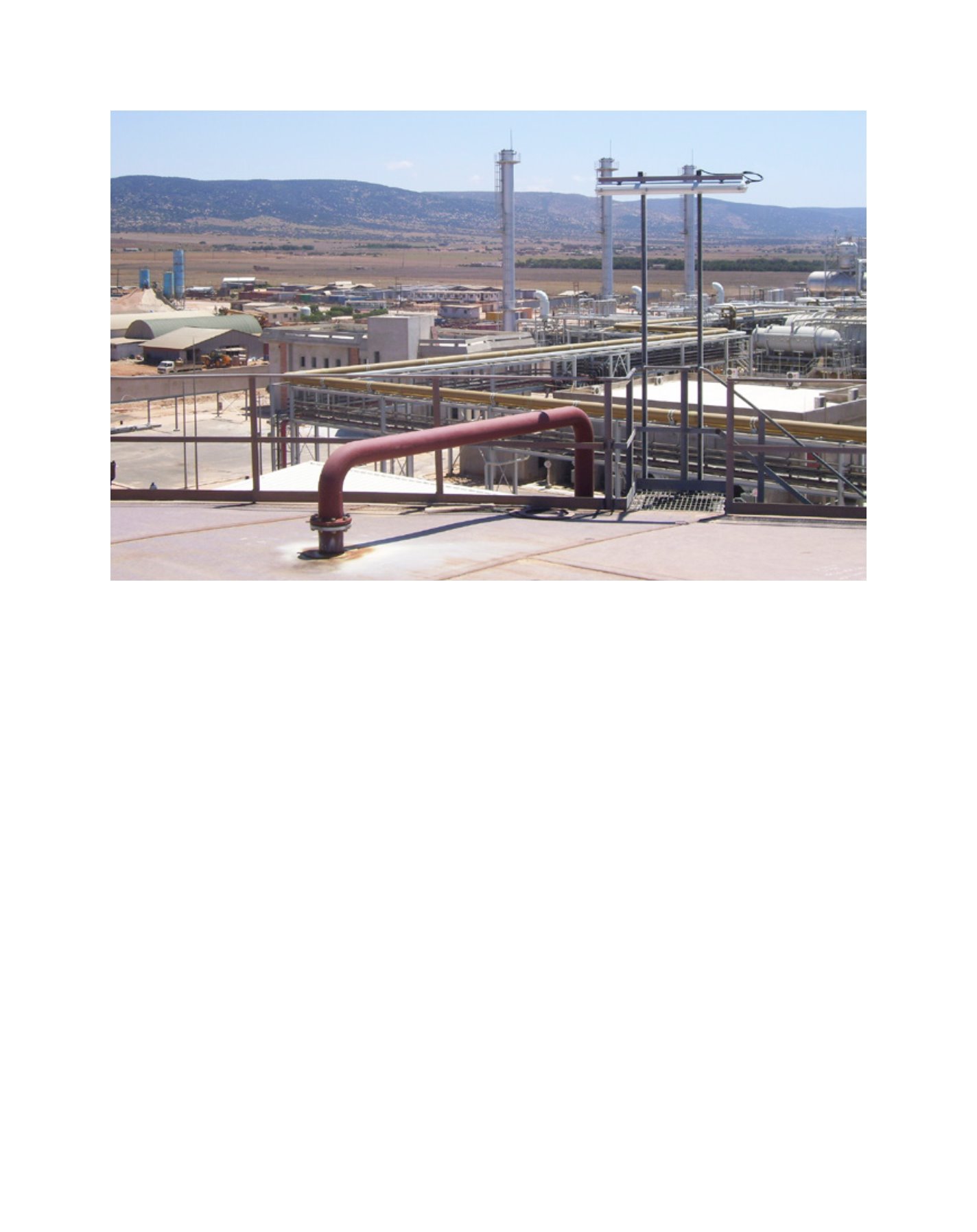

[
] 94
access
to
water
and
sanitation
for
all
overall. Population growth and rapid urbanization have
placed tremendous pressure on the scarce water resources
and the fragile ecosystem.
More than 40% of the total area of Libya, particularly
the northern parts, is underlain by high salinity aquifers
of up to, or exceeding, 5g/l. This is further complicated by
seawater intrusion in the most populated areas along the
Mediterranean coast.
Previously, most domestic water supplies were produced
from local wellfields or individual municipal wells, in addi-
tion to scattered irrigation wells in rural areas, with total
dissolved solids (TDS) ranging from less than 500mg/l to
over 2,000mg/l.
Intensive groundwater extraction near the two largest
cities of Tripoli and Benghazi has rendered the water unsuit-
able for direct use. In 1988, the TDS value of the Benina
wellfield south of Benghazi reached 3,000mg/l, and that of
the Swani wellfield south of Tripoli, 10,000mg/l by 1993. As
a provisional solution, these two major wellfields and several
others were shut down to be replaced by new wellfields in
relatively more suitable locations.
As the demand for water used in agriculture, accounting
for nearly 78% of the total use, continued to rise, it became
difficult to maintain an uninterrupted municipal supply of
acceptable quality. This was more pronounced in the Gefara
plain along the north-west coast of Libya, which includes the
capital, Tripoli, and incorporates over 100,000ha of intensive
irrigation and nearly 47% of the Libyan population.
A master plan for the management of water resources
in this area was launched in 1978 in cooperation with the
Food and Agriculture Organization (FAO) and resulted in a
number of recommendations to alleviate the problem includ-
ing inter-basin water transfer from the Murzuk basin in the
south of the country.
It then became widely accepted that planned groundwa-
ter mining could provide the opportunity for water supply
sustainability within a foreseeable timeframe, and that it could
also be progressively modified as water technology advances.
In 1983, based on the promising results of detailed hydro-
geological studies as well as the continuous monitoring of
the groundwater aquifers in the major sedimentary basins of
Kufra, Sarir, Tazerbu and Murzuk, the world’s largest ground-
water conveyance scheme known as the Great Manmade
River (GMR) was approved. The project taps freshwater
aquifers, via hundreds of wells ranging in depth from 400
to 800m, and conveys the water through 4m-diameter pre-
stressed concrete pipelines for over 4,000 kilometers to the
major urban and agricultural areas along the Mediterranean
coast. Two pipe manufacturing plants, capable of produc-
ing 200 of the 75t pipes every day, were constructed for the
purpose. A number of reservoirs of up to 24 million m
3
in
size and a total storage capacity of 55 million m
3
are annexed
to the water conveyance system. The project comprises
several phases and has the potential of transporting over 6.4
million m
3
/day.
The proportion of GMR water allocated for domestic use
was initially set at less than 20% but modified later to 37.5%
to cope with the steady increase in demand since the first
arrival of the conveyed water to Benghazi in 1991 and to
Tripoli in 1996.
The 40,000m
3
/day Butraba desalination plant, constructed in 2007 for domestic water supply to Al Marj city and surrounding urban areas in north-east Libya
Image: GWA
















